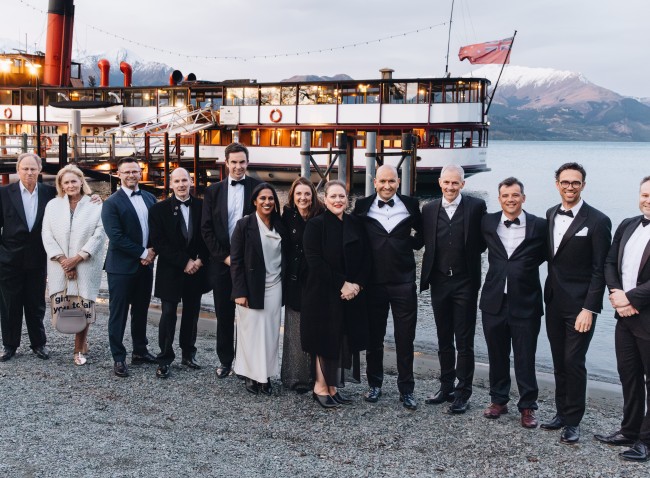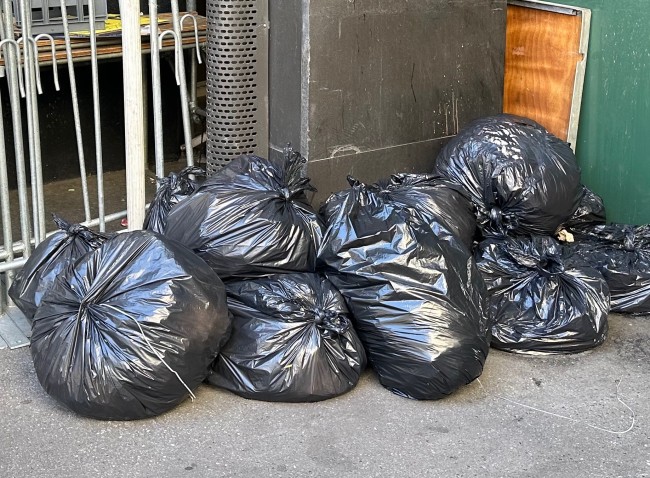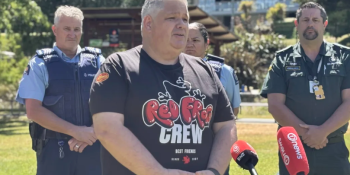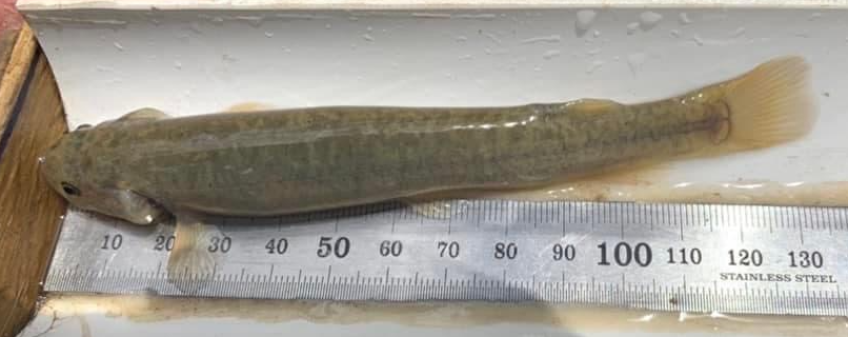
Protecting Central Otago's galaxiids from ‘slide into extinction’
The Otago Regional Council, Otago Fish and Game Council, mana whenua and community groups are working together on a “project-by-project” basis toward protecting numerous galaxiid species across Otago from eventual extinction.
The dwindling galaxiid populations, especially those fish which are non-migratory and otherwise live entirely in only a few hundred metres of some streams, are most at risk, says ORC’s Team Leader Biodiversity, Pete Ravenscroft.
“In general, Otago’s galaxiid population are fragmented and declining, and without management intervention their slide into extinction will continue,” he says.
In creating “galaxiid protection areas”, four streams or tributaries in Otago now have fish barriers with weirs or culverts in place, with more planned in coming years; albeit developing a programme for the protection areas is “still in its infancy”, says Mr Ravenscroft.
Otago Fish and Game Council Chief Executive Ian Hadland says his Council has made endangered galaxiid protection “a priority and enshrined in policy”.
“We recognise the presence of trout in these remote galaxiid populations is one of a number of factors contributing to their decline, and it’s probably the easiest factor to manage in the short term, while long-term
solutions to their survival are being found, including improving their habitat,” he says.
In every instance of trout exclusion, permission and a removal permit is required from Otago Fish and Game, which include a number of permit conditions, including relocation of the fish captured during the removal operation.
Mr Ravenscroft says there have been numerous historic and current conversations between all agencies and stakeholders in an attempt form a species interaction group, but until this group is formalised and becomes
established, ORC will continue to work with Fish and Game on a “project by project” basis.
ORC Chief Executive Richard Saunders says that these projects often involve a number of interested parties so it’s important that there are opportunities for everyone to be involved.
Staff will work with mana whenua, communities, landowners, Fish and Game and the Department of Conservation as each galaxiid project begins to take shape, Mr Saunders says.
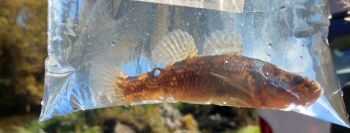
ORC currently has Fish and Game permits to remove trout from four tributaries of the Kye Burn and two tributaries in the Upper Clutha area
Mr Hadland says Fish and Game has been mapping the extent of native fish populations through its routine waterway surveys for many years and working alongside other agencies on small-scale native fish protection projects.
So while it’s not necessarily new work, Mr Hadland is pleased to see ORC giving it greater emphasis.
“Productive fish populations rely on quality habitat, including water and riparian management, and the ORC can play a key role there,” Mr Hadland says.
Otago has 15 non-migratory galaxiid species, of which 14 are threatened; four have a threat status of Nationally Critical (Highest threat category); five with a threat status of Nationally Endangered (Second Highest) and five have threat status of Nationally Vulnerable (Third highest).
Eight of these species are endemic to Otago waters.
Nine are only found in Otago. There are also four whitebait species in the region.
Three weirs and culvert installation so far
Mr Ravenscroft highlights that for some galaxiid species, their total area occupancy is confined to a few hectares of river reaches. Many galaxiid populations are limited to a few metres of a stream, generally in the headwaters of small tributaries or small spring creeks.
So far around Otago there have been three weirs and a culvert installed to protect galaxiid populations: the three weirs have been installed in Akatore Creek, Swin Burn and most recently Thomson’s Creek, which was
formally opened in early-April. A culvert was installed in a small tributary of the Swin Burn.
ORC currently has Fish and Game permits to remove trout from four tributaries of the Kye Burn and two tributaries in the Upper Clutha area, Mr Ravenscroft says.
“The design of the current galaxiid protection area work programmes is working toward a better understanding on what mechanisms are best protecting the galaxiids from salmonids,” he says.
ORC is currently writing a five-year plan which will prioritise species and populations. Once it is finalised and resources are confirmed, ORC will be better placed to confirm what restoration projects will be next, Mr Ravenscroft says.
“There already exists several natural barriers which are excluding trout from galaxiid population areas. Ideally, we’d like to expand this by a further 25-30 [man-made barriers] over the next five years.”
“The use of existing water-take structures, track and road culverts or enhancing existing natural occurring waterfalls will all be considered, in any future management decisions,” he says.
Central Otago roundhead galaxias
The Central Otago roundhead galaxias is only found in Central Otago and nowhere else in the world. This species has a restricted distribution occurring in some tributaries of the Taieri River and Manuherekia River catchments.
The lower limit of the Central Otago roundhead galaxias in the Manuherekia catchment is Thomson’s Creek, while the lower limit within the Taieri catchment is in the vicinity of Middlemarch, says ORC’s Team Leader
Biodiversity, Pete Ravenscroft.
“In the past 25 years freshwater ecologists have observed a 50% loss of populations and or decline of numbers across the distributional range Central Otago roundhead galaxias,” he says.
The 2021 freshwater fish surveys of Thomson’s Creek supported this general understanding that the Central Otago roundhead galaxias have undergone significant distributional range shrinkage, with half of the historic previously known locations having disappeared.
“The remaining populations are marginal. They are either confined to small sections of springs and or are compromised my instream pressures. These remnant populations are of increasingly value and if not protected, then these too will be lost and on-going slide into extinction will continue for this galaxiid species,” he says.
The galaxiid population found in the Mawhinney Road section of the main stem of Thomson’s Creek, is the healthiest of the Thomsons Creek populations, but it is confined, he says.
The recent installation of the barrier provides security from upstream migration of brown trout by preventing access into this pocket of galaxiids.
The remaining populations occupy small springs where the galaxiids in most parts tend to be located towards the head of these type of ecosystems.
Habitat of the Central Otago roundhead galaxias
Central Otago roundhead galaxias utilise a variety of instream habitats, larger adults occupying cover in pools and smaller subordinate adults living amongst cobble and boulders in riffle and runs.
Streams containing alluvial gravels are the most preferred habitat of the Central Otago galaxias.
The Central Otago roundhead galaxias lives for three or more years. Spawning begins in late September through to November and eggs are laid amongst porous cobble/gravel substrates at outflows of subsurface flows.
The Central Otago roundhead galaxias are found to occupy relatively low gradient streams. The species appears to only occur within a small altitudinal band of 320 - 720 metres above sea level.
Therefore, the habitat available to the Central Otago roundhead galaxias tends to be located in low-gradient streams, where they are at greater risk.
There is also less opportunity at these lower lying elevations to encounter a naturally occurring protective barrier which prevents migration of invasive introduced species, which increases their vulnerability to predation, competition and consequently disappearance.
Main image (Supplied/ORC): Central Otago roundhead galaxiid










